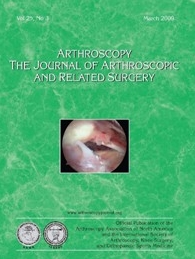
SPORTS MEDICINE
Periarticular infiltration demonstrated better analgesia and opioid-sparing effect vs FNB in ACLR
Arthroscopy. 2018 Jan;34(1):182-188129 patients scheduled for arthroscopic anterior cruciate ligament reconstruction were randomized to receive postoperative analgesia including either periarticular infiltration analgesia (PAI) or a femoral nerve block. Patients were assessed primarily for analgesic outcomes, including pain scores and patient-controlled fentanyl consumption. At all time points up to 2 days postoperatively, pain scores were significantly lower in the PAI group compared to the FNB group; pain scores from 3 to 14 days after surgery did not significantly differ between groups. Total PCA fentanyl consumption over the first 24 hours after surgery was also significantly lower in the PAI group compared to the FNB group.
Unlock the full ACE Report
You have access to {0} free articles per month.Click below to unlock and view this {1}
Unlock NowCritical appraisals of the latest, high-impact randomized controlled trials and systematic reviews in orthopaedics
Access to OrthoEvidence podcast content, including collaborations with the Journal of Bone and Joint Surgery, interviews with internationally recognized surgeons, and roundtable discussions on orthopaedic news and topics
Subscription to The Pulse, a twice-weekly evidence-based newsletter designed to help you make better clinical decisions
Exclusive access to original content articles, including in-house systematic reviews, and articles on health research methods and hot orthopaedic topics
Or upgrade today and gain access to all OrthoEvidence content for just $1.99 per week.
Already have an account? Log in


Subscribe to "The Pulse"
Evidence-Based Orthopaedics direct to your inbox.
{0} of {1} free articles
Become an OrthoEvidence Premium Member. Expand your perspective with high-quality evidence.
Upgrade Now












































































